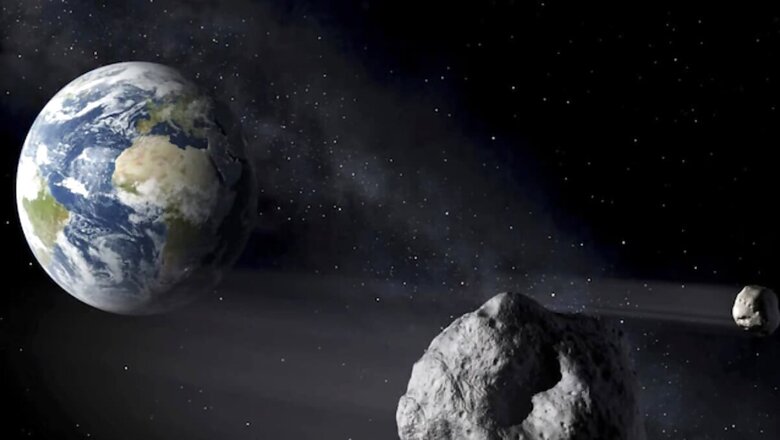
views
An asteroid nearly the size of two football fields will have a close approach to Earth this month. The asteroid, named 2024 ON, will be about 620,000 miles distant from planet Earth on September 15. Although this seems to be far away, it is astronomically near, putting the distance at just 2.6 times the lunar distance from our planet. The 2024 ON asteroid is around 720 feet in diameter, making it one of the most comprehensive near-Earth objects that has come relatively near off late.
According to the Virtual Telescope Project, the asteroid will be visible from the Northern Hemisphere. It happens about once every 10 years, it added. On September 15 at around 2:30 pm ET, the public can begin observing its approach through the Virtual Telescope live online feed. The project aims to broadcast the event, allowing people from all over the globe to watch the asteroid’s close passing even if local weather and lack of gear restrict direct viewing, reported New York Post.
Based on the case of the 2024 ON Asteroid track, such an event has been closely monitored. The asteroid has a known and calculated trajectory which means that it will fly by without posing any danger and therefore, it will be a good event for observation. This flyby provides astronomers with a unique chance to gather further data on the asteroid’s composition, rate, rotation, path and other parameters.
It is critical for fine-tuning models that anticipate NEO orbits and provide an enhanced perspective of the broader solar system dynamics. Each asteroid flyby brings added clarity to these celestial bodies, many of which remain generally unexplained despite their importance to planetary defence and science.
NASA explains that asteroids are giant pieces of material left after the formation of the solar system 4.6 billion years ago. It consistently keeps track of NEOs and maintains a catalogue of the paths of existing NEOs. PHAs are asteroids more extensive than 150 meters and get within 4.6 million miles of the Earth’s orbit.
NASA is implementing asteroid deflection technology to help analyse and reduce potential asteroid impacts. The DART plan is one such being carried out to test the feasibility of using a kinetic light craft spaceship to alter the course of an asteroid.


















Comments
0 comment